-

-

Sign Types
Regulatory: inform of traffic laws and
regulation
Warning : alert users of hazardous
conditions on
or adjacent to the trail
Guide: provide guidance to and from
destinations
-

Regulatory Signs
Stop
No Snowmobiling
Keep Right
No Wheeled Vehicles
Right-hand Placement
Sign Color: red, black, and white
-

Warning Signs
Chevron
Directional Arrow
Yield Ahead
Reassurance Blazer
-

Stop Signs
Federal and state highways.
Low visibility intersections.
Merging from trail onto Highways.
(ie. Bridge Crossings)
Place off the road and on right of trail.
Do not place at driveways.
-

Stop Ahead
Always used with stop signs.
Placement is 250-feet before stop.
JUST AS IMPORTANT AS THE
ACTUAL STOP SIGN!!!
-

Turn Ahead
Used much like Stop Ahead
Place 250 feet before turn
Most important in Open Areas
Trail Inspections reflect more are
needed throughout the state
-

Left or Right Turn
Place at 90-degree turn
Place directly at turn
Must be used in conjunction
w/a
Turn Ahead
-

Confusing Corner
-

Turn Ahead Needed
-

Slow
Place at least 200-feet before needed providing the rider enough time to slow down before the area of concern
This is a very common mistake found during trail inspections
-

Yield Ahead
Informs rider of potential traffic
Place a Slow Sign in advance to slow traffic down
-

Chevrons
USE IN 3’S
Changing the normal traffic flow
Long and sweeping curves
Hazard avoidance
Not to be used as a Turn Arrow
#1 Misused Sign
-
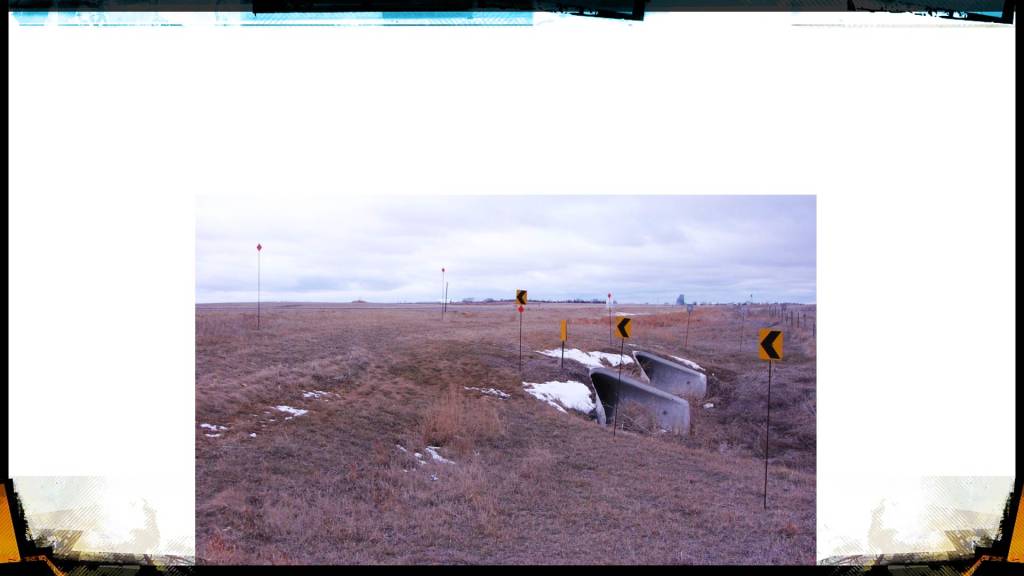
Correct Use of Chevrons
-

Wrong use of Chevrons
-

Missing Chevrons
-

You Are Here
Guide Sign informing the rider of their current location on the state trail system
Place at all intersections or when the trail changes direction
Can be used with 90-Degree Turn Arrows
-

Object Markers
Show safe passage for snowmobilers.
Must be used in sets of two.
Should not be cut in half.
Used to mark objects.
Placed at bridges and gates.
-

Trail Ends Sign
Post at end of state trail
and at city limits to inform
riders they are no longer
on the state trail system.
-

No Snowmobiling Sign
Placed by the Department of
Transportation at interstate crossings
Place along the trail system
to inform riders of locations where
snowmobiling is not allowed such as
Private Property
-

No Wheeled Vehicles
Do not place No Wheeled Vehicles
signs in right-of-ways (ditches)
Right-of-ways are open to public use
Place Snowmobile Only Signs on
trails in Right-of-Ways
-
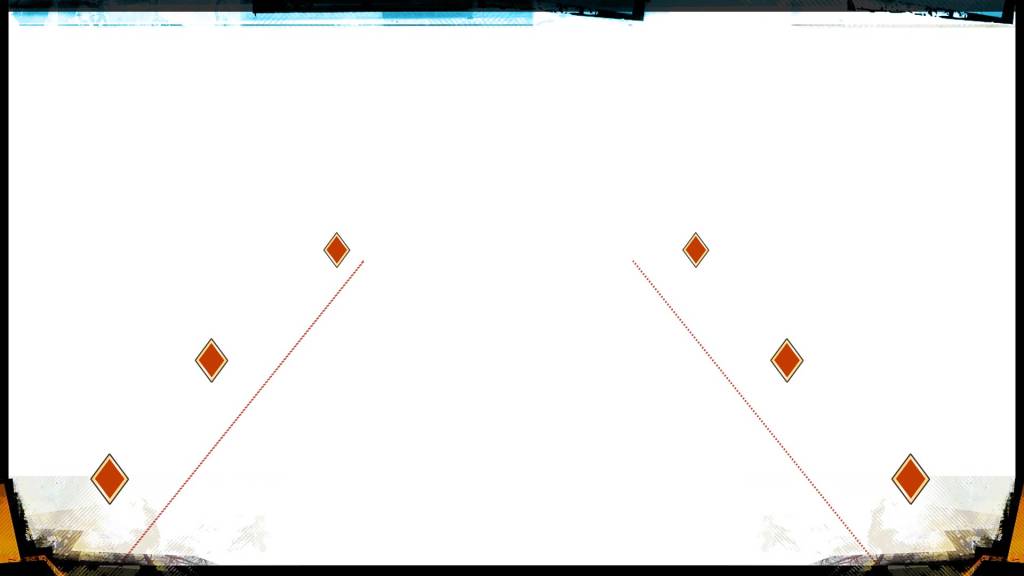
And the most used sign
The “Reassurance” Trail Blazer!
-

“Reassurance” Trail Blazer
Used ONLY to mark the safe corridor
Corridors must include a minimum of 2 blazers
Common sense placement is essential
Never used to mark hazards
Use Blazer Stickers on backside of signs
Remember to allow for poor visibility.
Approaches: both blazers must be visible
from either side of the approach (if not, add more)
-

Using other signs as blazers
-

The Safety Corridor
The corridor marks a safe path of travel for the rider
-

The Safety Corridor
-

Approaches with culverts
-
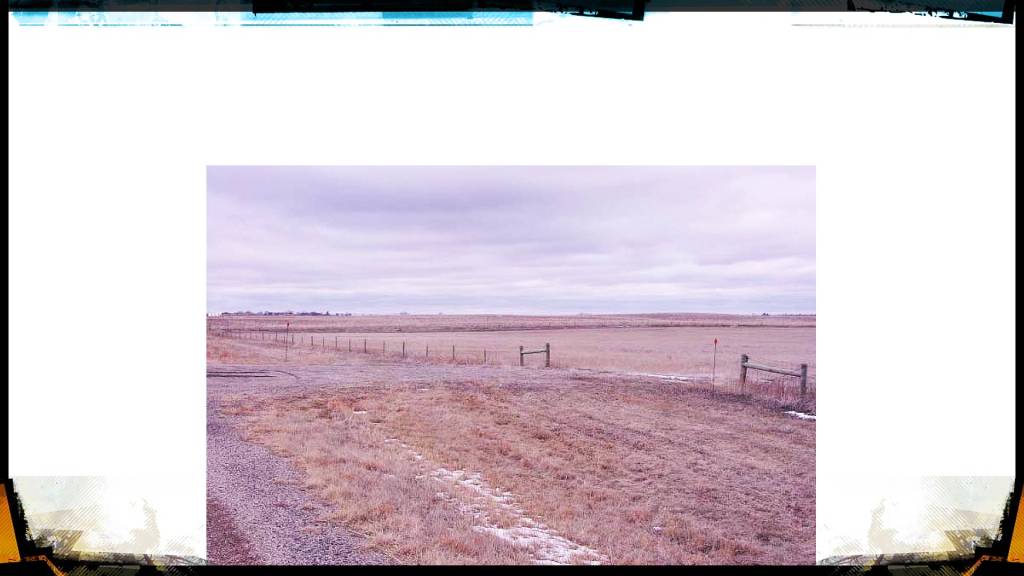
Placement with no culvert
-

Mounting Several Signs on 1 Post
All signs must be of thesame type
Post no more than 3 signs on 1 post
Signs must compliment one another
Sign message must be clear and relay a shortmessage
-
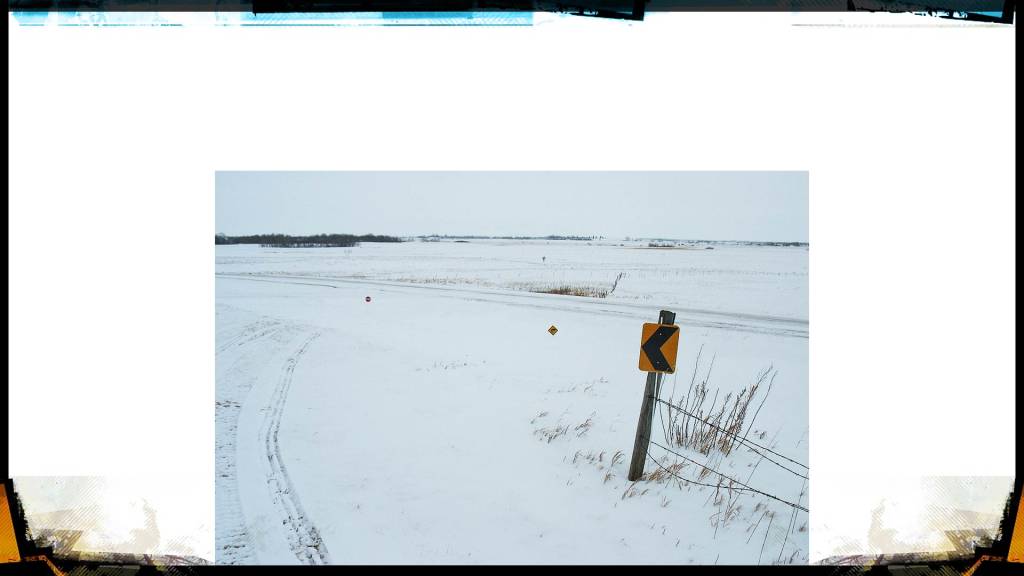
Signing Sins
-

Signing Sins
-

Signing Sins
-
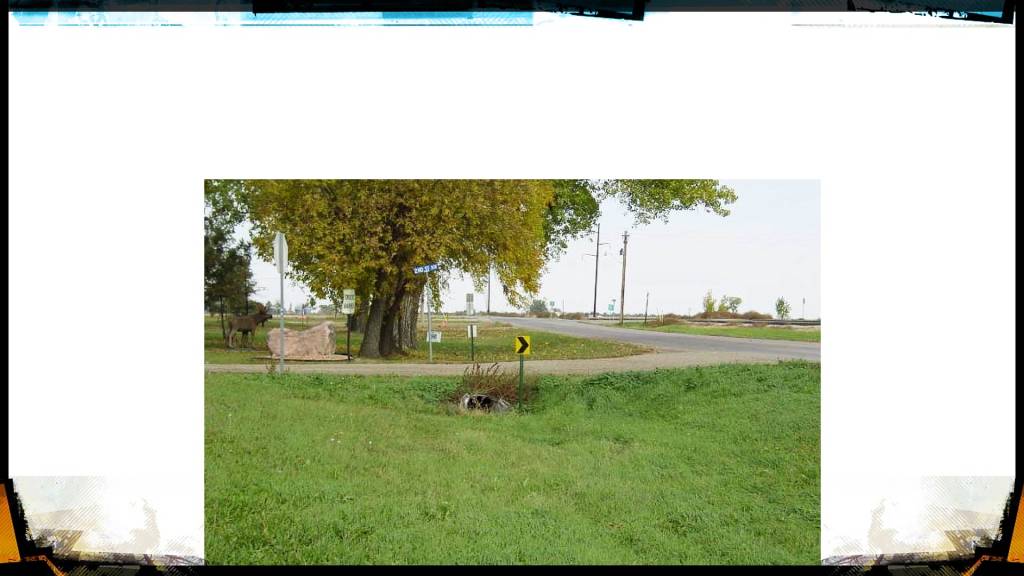
Signing Sins
-

Signing Sins
-

Existing Sign Standards
No posting trail signs on Department of Transportation Standards
If local governing entities allow this; the trail association must acquire a letter of approval to SND
-

Sign For
Poor weather and light conditions
Night use
Lack of tracks
Distances based on visibility
Two-way traffic
Sign it like you never rode it before
-

Things to Remember
Consistency
Sign Placement: riders shouldn’t have to scan for the next sign
Buried signs can become a hazard (barely showing or missing)
Signing in towns
Signing certification required every 3 years
Trail must be a minimum of 10’ wide
-

Signing for Benchmark
Club Trail Coordinators need to contact the Trail Association’s head Trail Coordinator with signing progress
Certification of Trail Completion forms are
due in the office on December 15th
If 100% of the signing isn’t completed by December 15th, trail associations must complete Section B on the 1st Benchmark Form
Once the signing is completed contact SNDTP
with the completion date
-

Trail Inspections
Trail Inspection reports are mailed within one
week after inspection
These reports reflect potential liabilities for the
local trail system and must be addressed within
two weeks of the report postmark date.
If corrections are not addressed by the 2nd
inspection, the trail association will lose signing
points resulting in less funding
-

State Law for Right-of-ways
ND law allows two-way travel on state trails
that exist in right-of- ways, sign accordingly
FYI, riders must still travel in the same direction
as traffic when operating in a right-of-way that
is not a state trail.
-

Year Round Signage
Signs placed on the trail from Oct. 1st to Sept. 30th
Where year round signage is allowed:
• Wooded areas
• Land Lease provides approval
Not allowed where visible from communities or near
high traffic roadways
-

Year round signing on
Permanent posts
If owner has provided approval on the
land lease agreement
Regulatory, warning and guide signs cannot
be on permanent posts – Blazers only.
Allowed for a maximum of five miles.
Cannot be used where trails turn or direct
traffic onto private property.
-

Guy-wires
If a trail system signs the trail between a guy-wire
and pole, the trail system will be automatically
closed until the signing is corrected.
• Over 10 Feet: If there is enough room for a minimum 10 foot wide trail next to the guy-wire, use the sign corridor method.
• Under 10 Feet: If space next to the guy-wire is less than 10 feet, use chevrons in a set of three to push snowmobile traffic away from the guy-wire.
-

Snow Poles
The poles are 6’, orange and have a reflective
band at the top.
Use them to replace standard poles and blazers.
(Ex.: Signing Corridors)
-

Buried Signs
In the event, signs become buried, please
remark the trail per the programs guidelines
Trail blazers attached to lathe can be used
to replace the buried signs.
-

Ice Depth:
When signing bodies of water:
Trails cannot be opened for grooming
until the ice is a minimum of 12” thick
throughout the entire trail corridor.
(Corridor must be a minimum of 10’
wide)
-

Thanks!
We would like to thank you for participating
in our trail signing class today.
Remember Safety First!!!

 Sign TypesRegulatory: inform of traffic laws and regulationWarning : alert users of hazardous conditions on
Sign TypesRegulatory: inform of traffic laws and regulationWarning : alert users of hazardous conditions on


 Regulatory SignsStop
Regulatory SignsStop





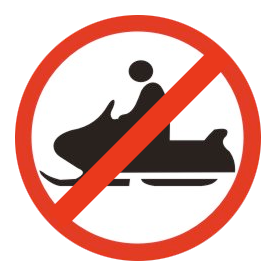 Sign Color: red, black, and white
Sign Color: red, black, and white Warning SignsChevron
Warning SignsChevron





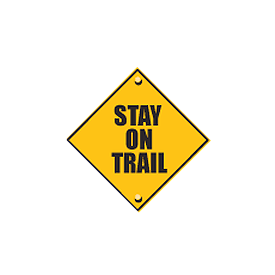

 Stop SignsFederal and state highways.
Stop SignsFederal and state highways.





 Stop AheadAlways used with stop signs.
Stop AheadAlways used with stop signs.


 Turn AheadUsed much like Stop Ahead
Turn AheadUsed much like Stop Ahead

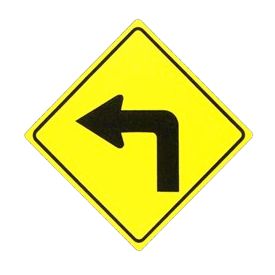


 Left or Right TurnPlace at 90-degree turn
Left or Right TurnPlace at 90-degree turn

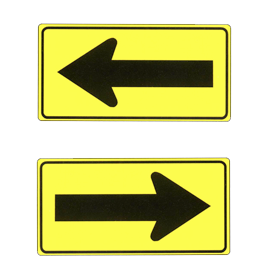

 Confusing Corner
Confusing Corner Turn Ahead Needed
Turn Ahead Needed SlowPlace at least 200-feet before needed providing the rider enough time to slow down before the area of concern
SlowPlace at least 200-feet before needed providing the rider enough time to slow down before the area of concern


 Yield AheadInforms rider of potential traffic
Yield AheadInforms rider of potential traffic


 ChevronsUSE IN 3’S
ChevronsUSE IN 3’S








 Correct Use of Chevrons
Correct Use of Chevrons Wrong use of Chevrons
Wrong use of Chevrons Missing Chevrons
Missing Chevrons You Are HereGuide Sign informing the rider of their current location on the state trail system
You Are HereGuide Sign informing the rider of their current location on the state trail system




 Object MarkersShow safe passage for snowmobilers.
Object MarkersShow safe passage for snowmobilers.



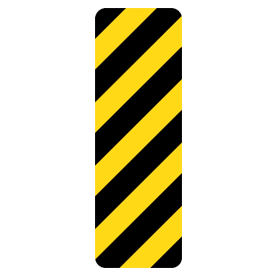 Placed at bridges and gates.
Placed at bridges and gates. Trail Ends SignPost at end of state trail
Trail Ends SignPost at end of state trail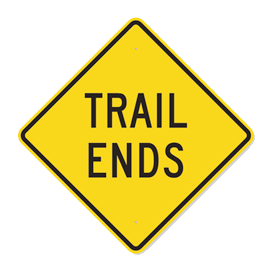
 No Snowmobiling SignPlaced by the Department of
No Snowmobiling SignPlaced by the Department of


 No Wheeled VehiclesDo not place No Wheeled Vehicles
No Wheeled VehiclesDo not place No Wheeled Vehicles
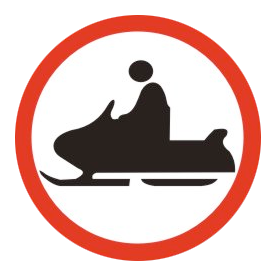


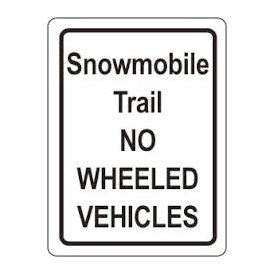
 And the most used signThe “Reassurance” Trail Blazer!
And the most used signThe “Reassurance” Trail Blazer! “Reassurance” Trail BlazerUsed ONLY to mark the safe corridor
“Reassurance” Trail BlazerUsed ONLY to mark the safe corridor






 Using other signs as blazers
Using other signs as blazers The Safety CorridorThe corridor marks a safe path of travel for the rider
The Safety CorridorThe corridor marks a safe path of travel for the rider The Safety Corridor
The Safety Corridor Approaches with culverts
Approaches with culverts Placement with no culvert
Placement with no culvert Mounting Several Signs on 1 PostAll signs must be of thesame type
Mounting Several Signs on 1 PostAll signs must be of thesame type


 Signs must compliment one another
Signs must compliment one another Signing Sins
Signing Sins Signing Sins
Signing Sins Signing Sins
Signing Sins Signing Sins
Signing Sins Signing Sins
Signing Sins Existing Sign StandardsNo posting trail signs on Department of Transportation StandardsIf local governing entities allow this; the trail association must acquire a letter of approval to SND
Existing Sign StandardsNo posting trail signs on Department of Transportation StandardsIf local governing entities allow this; the trail association must acquire a letter of approval to SND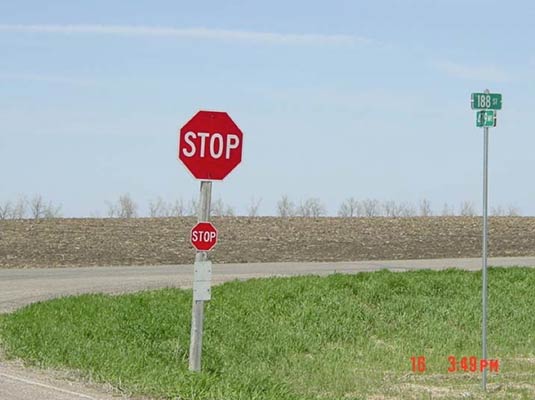
 Sign ForPoor weather and light conditions
Sign ForPoor weather and light conditions





 Things to RememberConsistency
Things to RememberConsistency





 Signing for BenchmarkClub Trail Coordinators need to contact the Trail Association’s head Trail Coordinator with signing progressCertification of Trail Completion forms are due in the office on December 15thIf 100% of the signing isn’t completed by December 15th, trail associations must complete Section B on the 1st Benchmark FormOnce the signing is completed contact SNDTP with the completion date
Signing for BenchmarkClub Trail Coordinators need to contact the Trail Association’s head Trail Coordinator with signing progressCertification of Trail Completion forms are due in the office on December 15thIf 100% of the signing isn’t completed by December 15th, trail associations must complete Section B on the 1st Benchmark FormOnce the signing is completed contact SNDTP with the completion date



 Trail InspectionsTrail Inspection reports are mailed within one
Trail InspectionsTrail Inspection reports are mailed within one


 State Law for Right-of-waysND law allows two-way travel on state trails
State Law for Right-of-waysND law allows two-way travel on state trails

 Year Round SignageSigns placed on the trail from Oct. 1st to Sept. 30thWhere year round signage is allowed:
Year Round SignageSigns placed on the trail from Oct. 1st to Sept. 30thWhere year round signage is allowed:
 Not allowed where visible from communities or near
Not allowed where visible from communities or near Year round signing on Permanent postsIf owner has provided approval on the
Year round signing on Permanent postsIf owner has provided approval on the



 Guy-wires
Guy-wires If a trail system signs the trail between a guy-wire
If a trail system signs the trail between a guy-wire Snow Poles
Snow Poles The poles are 6’, orange and have a reflective
The poles are 6’, orange and have a reflective

 Buried Signs
Buried Signs In the event, signs become buried, please
In the event, signs become buried, please
 Ice Depth:When signing bodies of water:Trails cannot be opened for grooming
Ice Depth:When signing bodies of water:Trails cannot be opened for grooming
 Thanks!We would like to thank you for participating
Thanks!We would like to thank you for participating
